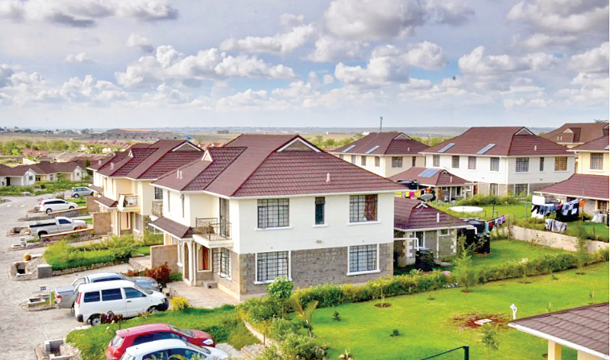Nairobi’s landlords feel the pinch as US cuts aid budget

Landlords in Nairobi’s high-end suburbs are beginning to feel the pinch as rental income shows signs of strain, with asking rents in several areas dipping amid fears of tenant exits following cuts in United States funding.
The latest market update by HassConsult reveals that rental prices in the city’s more affluent neighbourhoods posted either negative or marginal growth in the first quarter of the year, just as new US funding policies for supported missions came into force.
“The fall in asking prices revealed concerns about a fall in demand after the US cut off funding for its USAid programme and its affiliated programmes in Kenya. This action has led to mass layoffs, which affect the target market for the higher-end rental segment,” Sakina Hassanali, the Co-CEO & Creative Director at Hass consult said. Areas like Muthaiga, Nyari, and Kilimani were among the hardest hit, recording quarterly rental income drops of 4.9, 4.7, and 4.6 per cent respectively.
Westlands and Gigiri also saw declines, with rents falling by 3.1 and 1.9 per cent. Overall, the suburbs posted a 0.8 per cent drop in asking rents, signalling a cooling in demand and growing caution among property investors.
The ripple effect of reduced diplomatic and NGO-linked occupancy is beginning to reflect in the broader rental landscape, raising concerns over income sustainability for property owners in prime locations.
In terms of sales prices in the select suburbs, Gigiri and Westlands recorded the highest deviation, having -3.4 and –2.0 per cent respectively, followed closely by Nyari estate, Langata and Kitisuru, which all had contractions exceeding – 1 per cent.
The US foreign Aid funding played a pivotal role in the Kenyan economy, touching on different sectors such as health, education, agriculture and economic development areas, among others.
Through this involvement, the majority of the Kenyan citizens benefited from the sponsorships and the employment opportunities which associated them with decent habitation.
Majority of the employees
The majority of the employees under the programmes worked in organisations such as World Food Programme, Catholic Relief Services, Development Alternatives, World Vision, and Mercy Corps, which enabled them to get a reasonable income that arguably allowed them to tap into the leafy suburbs for work continuity.
The index shows a property price fall of -0.15 per cent in the last month, a rise of 0.29 per cent in the last quarter and have fallen by -0.10 per cent rise in the last year, an observation that is linked to the global economic dynamics.
“The global economic uncertainty is influencing property markets worldwide, and Kenya is no exception. Geopolitical tensions, interest rate shifts and policy changes have prompted more cautious investor behaviour,” she adds.
Combined with the current high cost of living levels that affects the greater population, it has become quite difficult for most tenants and potential homeowners in these areas to cope with the rates.
Hassanali also points out that property prices in Nairobi’s suburbs contracted for a fifth straight quarter, albeit marginally at 0.4 per cent compared to 0.8 per cent in the fourth quarter of 2024.
“The overall price rebound was mainly driven by higher asking prices on property in Nairobi’s satellite towns, which led to growth of 2.4 per cent,” she noted.
This, however, presents opportunities for potential property owners due to the drop in the sales prices. To fuel this further, banks and other lending institutions have started lowering their lending rates creating room for affordable Morgage and construction loan facilities. This breaks the development barriers that were associated with funding.
On average, since November last year, the interest rates by the banking sector have reduced by 3 percentage points following the directive by the Central Bank Kenya in a bid to allow private sector access to more affordable loans.














